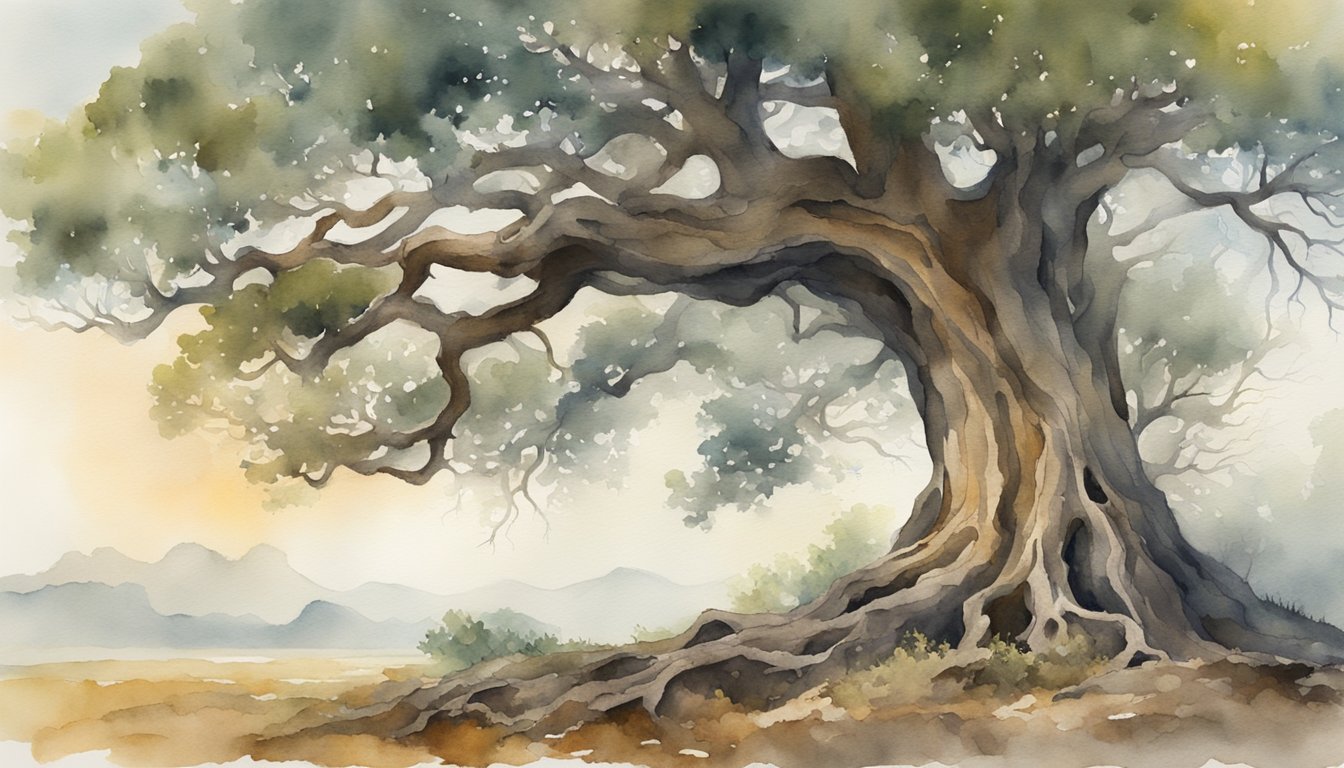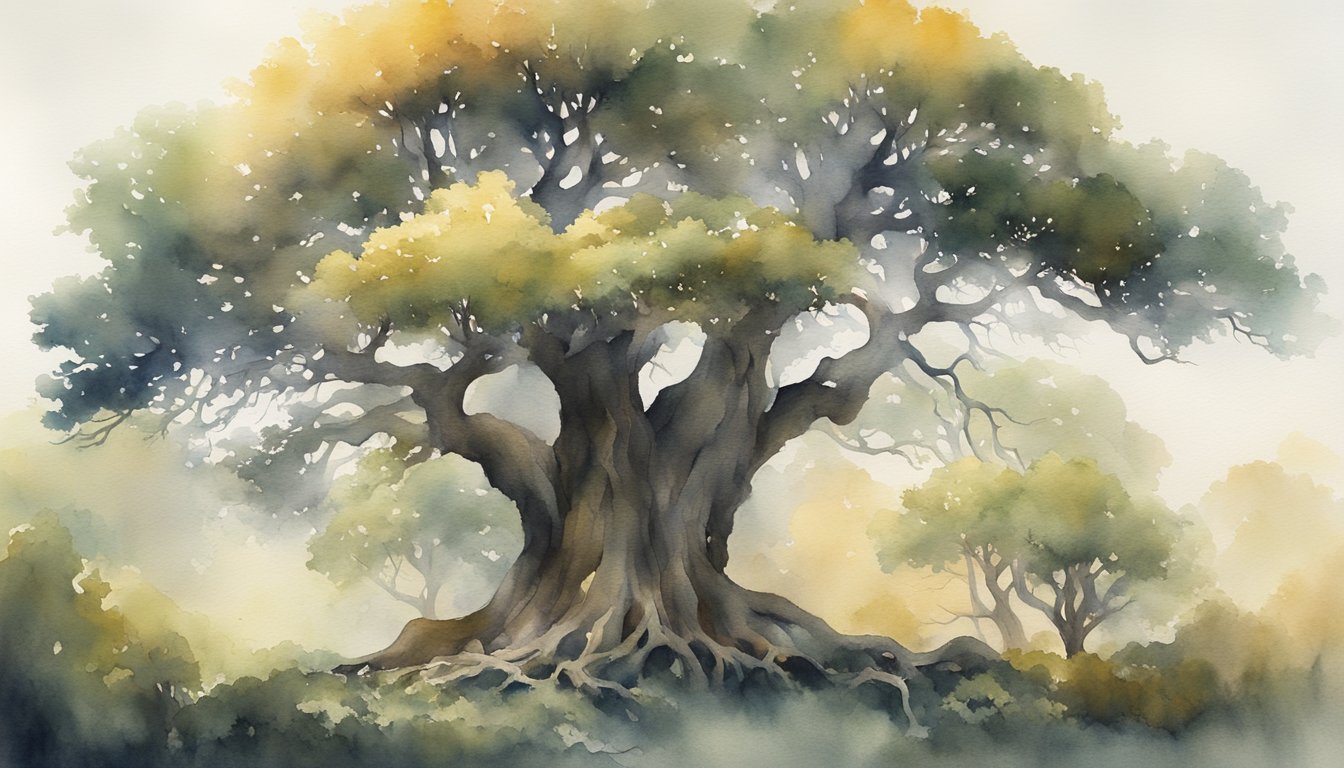Introduction to the World’s Oldest Trees
The world’s oldest trees offer a living history of our planet. These remarkable organisms provide insights into longevity and serve as time capsules for understanding past climate events.
Defining Oldest Trees
The oldest trees are individual trees that surpass others in age, reaching beyond a millennium, and are identified using specific scientific methods. They are a testament to longevity and survival, challenging the impacts of climate, pests, and human activity. These ancient giants can be located in various regions and often belong to species known for their resilience and adaptability.
The Importance of Age Determination
To assert the age of the oldest trees, scientists employ techniques like dendrochronology and radiocarbon dating. Dendrochronology, or tree-ring dating, examines the patterns of tree rings for clues about annual growth, which can sometimes be complicated by factors like missing or hollow rings. Radiocarbon dating assists in building a timeline for trees that are even older, where core samples of wood are analyzed to assess age based on carbon decay. Identifying the age of these trees is crucial since they play a key role in understanding environmental change over the centuries.
The Ancients of North America

In the vast landscapes of North America, centuries-old trees stand as silent witnesses to the passing of time, among them the Great Basin Bristlecone Pines and the Giant Sequoias – two species that have outlived entire civilizations.
The Great Basin Bristlecone Pines
The Great Basin Bristlecone Pines (Pinus longaeva) hold the title for some of the world’s oldest living organisms. Thriving in the arid regions of the White Mountains of Nevada and eastern California, these trees are renowned for their incredible resilience and longevity. Methuselah, a bristlecone pine which is over 4,800 years old and located in the Inyo National Forest, was once considered the oldest tree in the world. The exact location of Methuselah is kept secret to protect it from vandalism. Researchers from the University of Arizona’s Laboratory of Tree-Ring Research have been particularly fascinated by these pines’ ability to endure harsh climates using core samples for studying.
Another notable bristlecone pine was Prometheus, which had lived for around 4,900 years before it was cut down in 1964. It grew near Wheeler Peak in what is now Great Basin National Park, indicating just how widespread these ancient trees are across the high mountain ranges.
Giant Sequoias and Their Longevity
The Giant Sequoias, primarily found in California’s Sierra Nevada, are not just ancient, but are also some of the largest trees on Earth. General Sherman, located in Sequoia National Park, may not be as old as the oldest bristlecone pines, but it is the largest currently living tree by volume. Estimates put its age at about 2,200 years, making it a youngster compared to the bristlecone pines, yet still worthy of admiration for its incredible size and the longevity of its species.
Beyond their staggering heights, Giant Sequoias owe their longevity to their thick bark, which can protect them against fires, and their tannin-rich wood, which is resistant to rot and insect damage. While they might not reach the ages of the oldest bristlecone pines, they share a similarly lengthy lifespan that often extends beyond 3,000 years. Not far from the sequoias, within Fishlake National Forest, stands Pando, a clonal quaking aspen that, while not a single tree by conventional standards, can be considered one of the oldest—and heaviest—organisms, estimated to be thousands of years old.
Through the preservation efforts in places like Great Basin National Park and Sequoia National Park, these ancients of North America continue to thrive, telling their story of longevity to all who visit and sparking the curiosity of researchers looking to unlock the secrets of their impressive lifespans.
Aged Sentinels of the Southern Hemisphere

The Southern Hemisphere is home to some of the most majestic and ancient trees on Earth, playing a silent yet remarkable role in telling us the story of our planet’s past.
Patagonian Alerces
The Alerce (Fitzroya cupressoides), also known as the Patagonian Cypress, stands among the oldest living trees in the world. Found predominantly in the rainforests of Chile and parts of Argentina, they can live for thousands of years. Notably, the Alerce Milenario located within Alerce Costero National Park has been witness to history for over 3,600 years, making it one of the oldest trees on the planet. These age-old giants have been critical in understanding both past climate events and biodiversity within the Southern Hemisphere.
Australia’s Huon Pines
Shifting focus to Tasmania, the Huon Pine is another incredibly long-lived species with some individuals exceeding 3,000 years. Indigenous to the cool temperate rainforests of this island, these conifers grow near rivers and moist soil. Possibly the most famous stand of these ancient trees is on Mount Read, Tasmania, where they are protected, revered, and researched for their extraordinary longevity and resilience. Unlike the fast-growing species we often see, the Huon Pine grows very slowly, which contributes to its remarkable lifespan and the rich, detailed climatic history stored within its rings.

